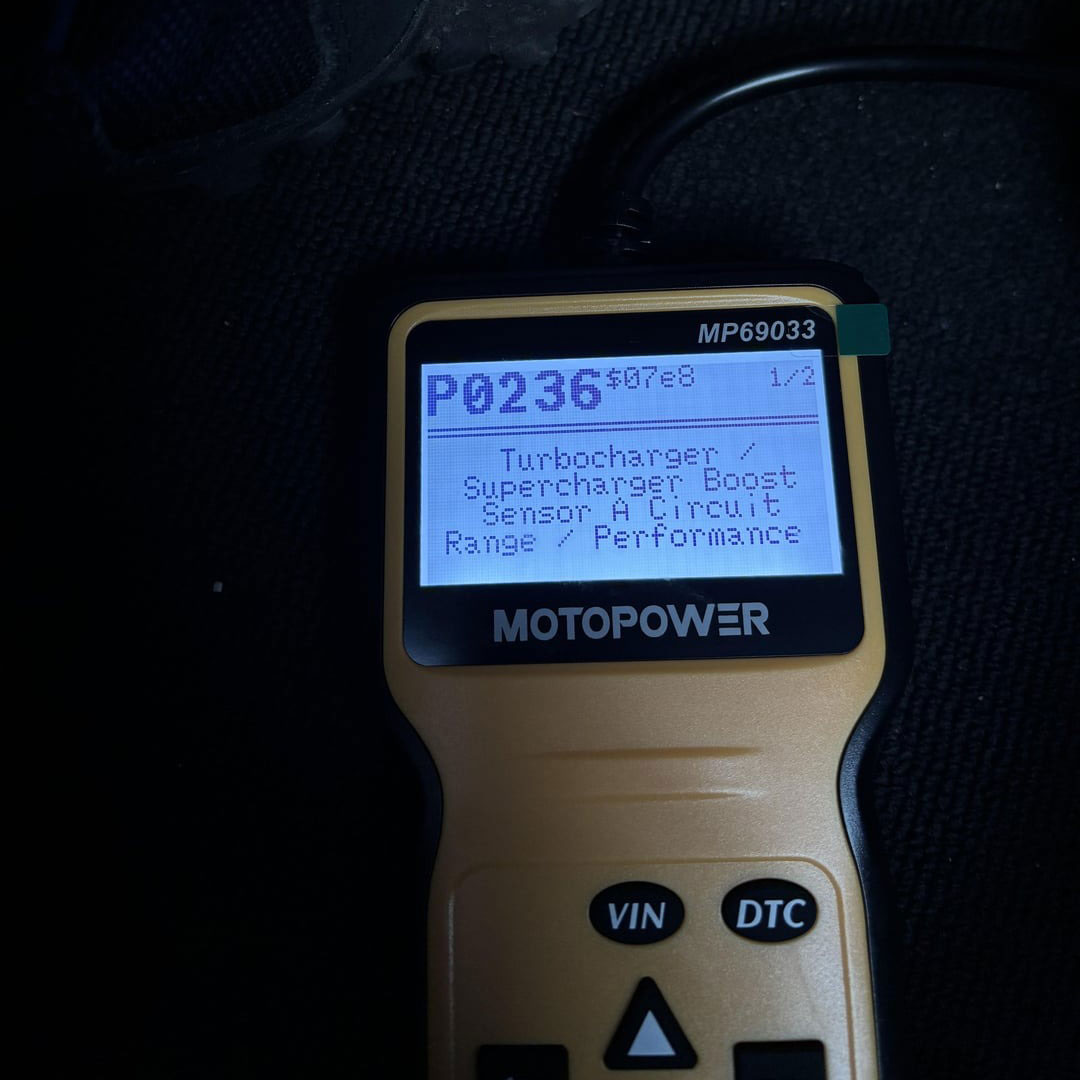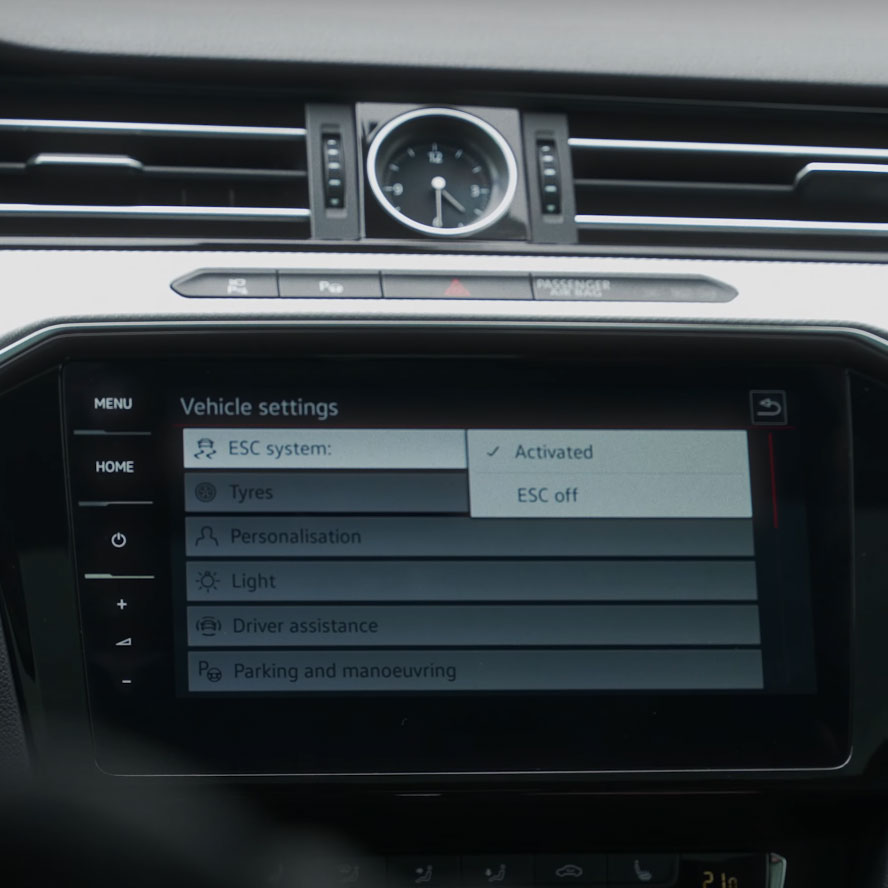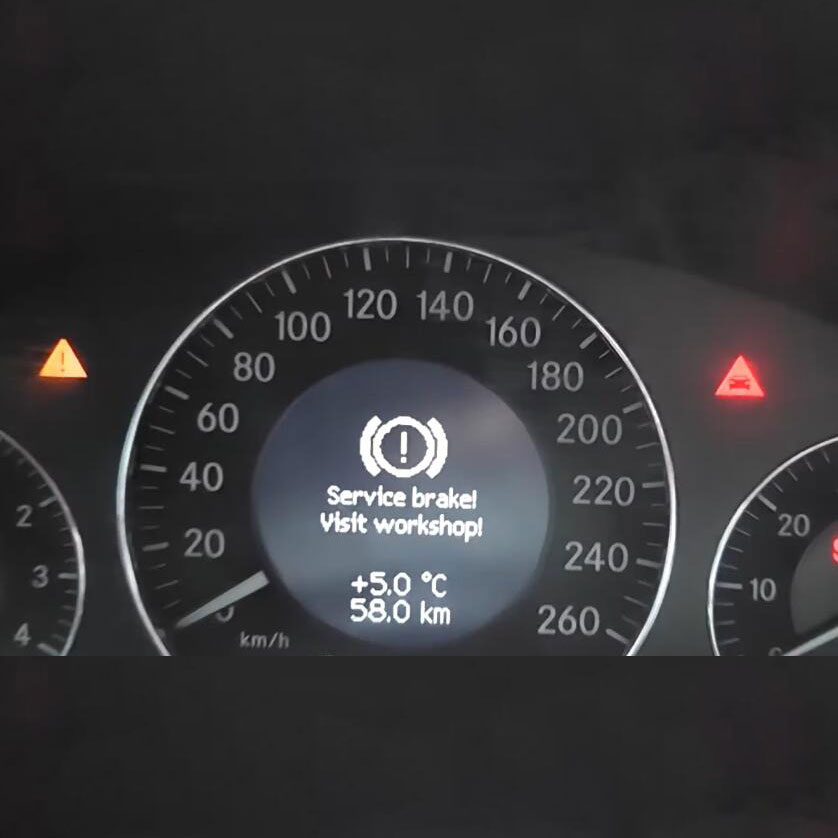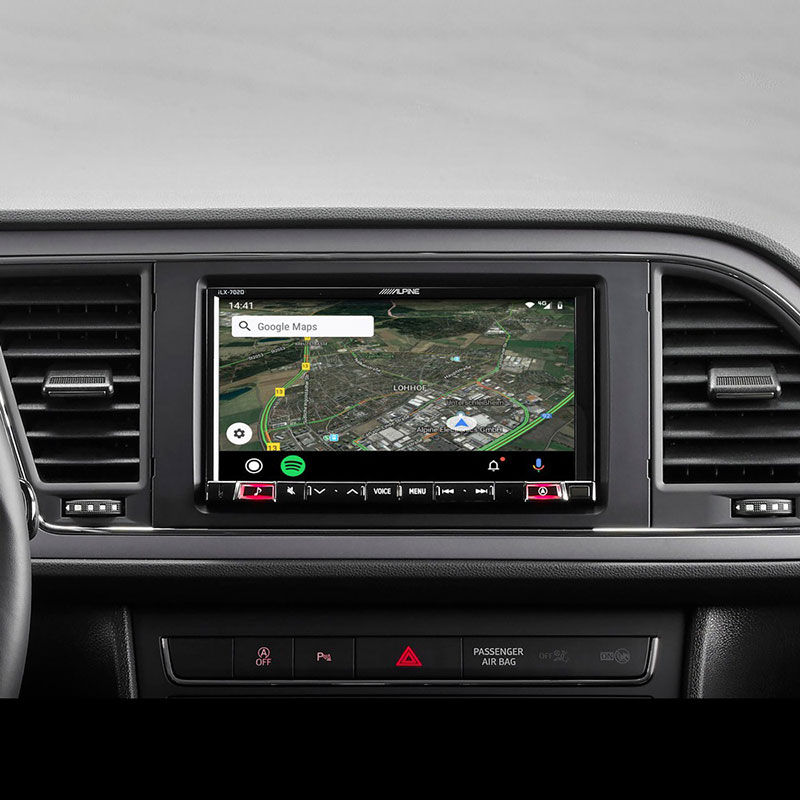
P2293 Audi: Fuel Pressure Regulator Valve – Diagnosis & Solutions
Contents
- 1. What Does the P2293 Audi Code Mean?
- 2. What are the Common Symptoms of P2293?
- 3. What are the Potential Causes of P2293?
- 4. How to Diagnose the P2293 Code Step-by-Step
- 5. What Tools are Needed for Diagnosing P2293?
- 6. How to Fix the P2293 Code: Step-by-Step Guide
- 7. What Parts Might Need to Be Replaced?
- 8. What are the Costs Associated with Fixing P2293?
- 9. Can I Drive My Audi with the P2293 Code?
- 10. How Can AutoExplain Help with the P2293 Code?
- 11. Understanding the Fuel Pressure Regulator Valve (N276)
- 12. The Role of the High-Pressure Fuel Pump (HPFP) in P2293
- 13. Understanding the Fuel System Components
- 14. Common Mistakes to Avoid When Diagnosing P2293
- 15. Advanced Diagnostic Techniques for P2293
- 16. Preventing Future Fuel System Issues
- 17. Real-World Examples of P2293 Troubleshooting
- 18. How Coding and Programming Services Enhance Repair Effectiveness
- 19. Benefits of Using AutoExplain for Audi Repairs
- 20. What is the Future of Automotive Diagnostics and Repair?
- 21. Contact AutoExplain for Expert Audi Services
- 22. FAQ About P2293 Code on Audi Vehicles
P2293 Audi code? Let’s decode this trouble code and find the best solutions for your Audi. AutoExplain provides expert insights and step-by-step guidance to resolve this issue efficiently, ensuring your Audi runs smoothly.
1. What Does the P2293 Audi Code Mean?
The P2293 code in an Audi, specifically related to the Fuel Pressure Regulator Valve (N276), indicates a mechanical malfunction. According to research conducted by Bosch Automotive Handbook in 2020, fuel pressure regulation is critical for optimal engine performance. This code suggests that the fuel pressure is not being maintained within the specified parameters, potentially leading to reduced engine power or other drivability issues. AutoExplain can help you diagnose and fix this issue effectively.
The P2293 code signifies that the Engine Control Unit (ECU) has detected an issue with the fuel pressure regulation system. It often points to a mechanical malfunction in the fuel pressure regulator valve (N276). This valve is responsible for controlling the fuel pressure in the high-pressure fuel rail. When it malfunctions, it can lead to insufficient fuel delivery to the engine, causing performance problems. The ECU detects this anomaly and triggers the P2293 code to alert the driver or technician. Understanding this code is the first step in diagnosing and resolving the underlying problem. AutoExplain offers the tools and expertise needed for accurate diagnostics and effective repairs.
2. What are the Common Symptoms of P2293?
Experiencing rough idling, decreased engine power, or difficulty starting your Audi? These are common symptoms associated with the P2293 code. Addressing these issues promptly is crucial for maintaining your vehicle’s health. AutoExplain provides solutions that tackle these problems head-on.
- Rough Idling: The engine may idle unevenly or stall, especially when the car is stationary.
- Decreased Engine Power: The car may feel sluggish, particularly during acceleration.
- Difficulty Starting: The engine may take longer to start than usual, or it may fail to start on the first attempt.
- Hesitation During Acceleration: The car may hesitate or stumble when you press the accelerator pedal.
- Fuel Efficiency Reduction: You may notice that your car is consuming more fuel than usual.
- Check Engine Light: The check engine light will illuminate on the dashboard.
- Stalling: The engine might stall unexpectedly while driving.
- Misfires: The engine may misfire, leading to a rough running condition.
- Unusual Noises: You might hear unusual noises from the engine compartment, such as a whining or sputtering sound.
- Smell of Fuel: In some cases, you may smell fuel, indicating a leak in the fuel system.
3. What are the Potential Causes of P2293?
Several factors can trigger the P2293 code in your Audi, including a faulty fuel pressure regulator, fuel pump issues, or even wiring problems. Identifying the root cause is essential for an effective repair. AutoExplain offers the diagnostic tools and expertise to pinpoint these issues accurately.
- Faulty Fuel Pressure Regulator Valve (N276): This is the most common cause. The valve may be mechanically stuck or electrically malfunctioning.
- High-Pressure Fuel Pump (HPFP) Failure: The HPFP might not be generating enough pressure due to internal wear or damage.
- Low-Pressure Fuel Pump Issues: A failing or weak low-pressure fuel pump can starve the HPFP, leading to insufficient high-pressure fuel delivery.
- Fuel Filter Clogging: A clogged fuel filter restricts fuel flow to the HPFP, reducing its ability to maintain adequate pressure.
- Wiring or Connector Problems: Damaged, corroded, or loose wiring and connectors to the fuel pressure regulator valve or the HPFP can cause malfunctions.
- ECU Issues: In rare cases, a faulty Engine Control Unit (ECU) can incorrectly interpret the fuel pressure readings and trigger the P2293 code.
- Fuel Injector Problems: Leaking or clogged fuel injectors can cause fluctuations in fuel pressure.
- Camshaft Issues: Wear or damage to the camshaft lobe that drives the HPFP can affect its performance.
- Fuel Line Leaks: Leaks in the high-pressure fuel lines can reduce fuel pressure.
- Sensor Malfunctions: Faulty fuel pressure sensors can provide incorrect readings to the ECU, leading to the P2293 code.
4. How to Diagnose the P2293 Code Step-by-Step
Diagnosing the P2293 code requires a systematic approach. Start with a thorough inspection of the fuel system components. Here’s a step-by-step guide to help you:
- Initial Scan: Use an OBD-II scanner to confirm the P2293 code and check for any other related codes.
- Visual Inspection: Check the fuel pressure regulator valve (N276), high-pressure fuel pump (HPFP), and related wiring for any signs of damage or corrosion.
- Fuel Pressure Test: Use a fuel pressure gauge to measure the fuel pressure at the fuel rail. Compare the reading to the manufacturer’s specifications.
- Component Testing: Test the fuel pressure regulator valve and the HPFP to ensure they are functioning correctly.
- Wiring Check: Inspect the wiring and connectors associated with the fuel pressure regulator and the HPFP for continuity and proper connections.
- Fuel Filter Inspection: Check and replace the fuel filter if it is clogged or dirty.
- Low-Pressure Fuel Pump Test: Verify that the low-pressure fuel pump is delivering adequate fuel to the HPFP.
- ECU Check: If all other components test okay, consider the possibility of an ECU issue. This may require professional diagnostic equipment.
AutoExplain provides detailed diagnostic procedures and the right tools to make this process easier and more accurate.
5. What Tools are Needed for Diagnosing P2293?
To effectively diagnose the P2293 code, you’ll need specific tools that provide accurate readings and facilitate thorough testing. Here’s a list of essential tools:
| Tool | Description |
|---|---|
| OBD-II Scanner | Reads and clears diagnostic trouble codes from the vehicle’s computer. |
| Fuel Pressure Gauge | Measures the fuel pressure in the fuel rail. |
| Multimeter | Tests electrical circuits for voltage, continuity, and resistance. |
| Wiring Diagram | Provides a visual representation of the vehicle’s electrical system. |
| Fuel Filter Wrench | Used to remove and install the fuel filter. |
| Socket Set and Wrenches | Needed to remove and install fuel system components. |
| Scan Tool with Live Data | Allows you to monitor real-time data from various sensors, including fuel pressure. |
| Fuel System Cleaning Kit | Used to clean fuel injectors and other fuel system components. |
| Pressure Testing Kit | Helps to identify leaks in the fuel system. |
| Diagnostic Software (VCDS) | Advanced software for Audi vehicles that provides detailed diagnostic information and the ability to perform component testing. |
With the right tools and a systematic approach, diagnosing the P2293 code becomes a manageable task. AutoExplain offers access to these tools and expert guidance to ensure you get the job done right.
6. How to Fix the P2293 Code: Step-by-Step Guide
Once you’ve diagnosed the P2293 code, the next step is to implement the necessary repairs. The repair process can vary depending on the root cause of the issue. Here’s a step-by-step guide:
- Replace the Fuel Pressure Regulator Valve (N276): If the valve is faulty, replacing it is often the most direct solution.
- Replace the High-Pressure Fuel Pump (HPFP): If the HPFP is failing, replace it with a new or remanufactured unit.
- Check and Replace the Low-Pressure Fuel Pump: Ensure the low-pressure fuel pump is functioning correctly and replace it if necessary.
- Replace the Fuel Filter: Replace the fuel filter to ensure a clean fuel supply to the HPFP.
- Repair Wiring and Connectors: Repair or replace any damaged or corroded wiring and connectors associated with the fuel pressure regulator and HPFP.
- Clean or Replace Fuel Injectors: Clean or replace fuel injectors if they are clogged or leaking.
- Check Camshaft and Follower: Inspect the camshaft lobe and follower that drive the HPFP for wear or damage, and replace if necessary.
- Address Fuel Line Leaks: Repair any leaks in the high-pressure fuel lines.
- ECU Repair or Replacement: If the ECU is the cause, it may need to be repaired or replaced by a professional.
- Clear the Code: After completing the repairs, use an OBD-II scanner to clear the P2293 code and any other related codes.
AutoExplain provides detailed repair instructions and quality replacement parts to help you resolve the P2293 code effectively.
7. What Parts Might Need to Be Replaced?
Depending on the diagnosis, several parts might need replacement to resolve the P2293 code. Here’s a list of common components:
| Part | Description |
|---|---|
| Fuel Pressure Regulator Valve (N276) | Controls the fuel pressure in the high-pressure fuel rail. |
| High-Pressure Fuel Pump (HPFP) | Generates high fuel pressure for direct injection engines. |
| Low-Pressure Fuel Pump | Supplies fuel from the fuel tank to the HPFP. |
| Fuel Filter | Filters out contaminants from the fuel. |
| Wiring and Connectors | Electrical components that provide connections to the fuel pressure regulator and HPFP. |
| Fuel Injectors | Delivers fuel into the engine cylinders. |
| Camshaft Follower | Transfers the motion from the camshaft to the HPFP. |
| Fuel Lines | Hoses and pipes that carry fuel throughout the fuel system. |
| Fuel Pressure Sensor | Monitors the fuel pressure and sends data to the ECU. |
| Engine Control Unit (ECU) | Manages the engine’s functions, including fuel delivery. |
AutoExplain offers a wide range of high-quality replacement parts to ensure your Audi is running at its best.
8. What are the Costs Associated with Fixing P2293?
The cost of fixing the P2293 code can vary widely depending on the parts and labor involved. Here’s a general breakdown:
- Fuel Pressure Regulator Valve (N276): $100 – $300
- High-Pressure Fuel Pump (HPFP): $400 – $1,200
- Low-Pressure Fuel Pump: $150 – $400
- Fuel Filter: $20 – $50
- Wiring and Connectors: $50 – $200 (depending on the extent of the damage)
- Fuel Injectors: $100 – $300 each
- Labor Costs: $75 – $150 per hour
According to RepairPal, the average cost to diagnose and repair a fuel system issue can range from $200 to $2,000, depending on the complexity and parts required. AutoExplain aims to provide cost-effective solutions, helping you minimize expenses while ensuring quality repairs.
9. Can I Drive My Audi with the P2293 Code?
Driving with the P2293 code is not recommended. The underlying issue causing the code can lead to significant engine performance problems and potential damage. Driving with this code may result in:
- Reduced Engine Power: The engine may not perform optimally, leading to sluggish acceleration and reduced overall performance.
- Risk of Stalling: The engine might stall unexpectedly, which can be dangerous, especially in traffic.
- Poor Fuel Economy: The fuel system inefficiency can lead to increased fuel consumption.
- Potential Engine Damage: Prolonged driving with a fuel pressure issue can cause damage to other engine components.
It’s best to address the P2293 code as soon as possible to avoid these potential problems. AutoExplain offers quick diagnostic and repair solutions to get your Audi back on the road safely.
10. How Can AutoExplain Help with the P2293 Code?
AutoExplain is your go-to resource for diagnosing and resolving the P2293 code in your Audi. Here’s how we can help:
- Expert Diagnostics: Our experienced technicians provide accurate and efficient diagnostic services to pinpoint the root cause of the P2293 code.
- Quality Parts: We offer a wide range of high-quality replacement parts, ensuring your repairs are reliable and long-lasting.
- Step-by-Step Guidance: We provide detailed repair instructions and technical support to guide you through the repair process.
- Cost-Effective Solutions: We aim to provide cost-effective solutions, helping you minimize expenses while ensuring quality repairs.
- Remote Support: We offer remote diagnostic and programming services to assist you from anywhere.
Contact AutoExplain today to get the expert help you need to resolve the P2293 code and keep your Audi running smoothly.
11. Understanding the Fuel Pressure Regulator Valve (N276)
The Fuel Pressure Regulator Valve (N276) is a critical component in modern Audi engines. Its primary function is to regulate the fuel pressure in the high-pressure fuel rail. This ensures that the engine receives the correct amount of fuel under various driving conditions. According to a study by the Society of Automotive Engineers (SAE) in 2018, precise fuel pressure control is essential for optimizing engine performance and reducing emissions.
The N276 valve is typically located on the high-pressure fuel pump (HPFP) or the fuel rail. It works by controlling the flow of fuel back to the fuel tank or the low-pressure side of the fuel system, thereby maintaining the desired fuel pressure. A malfunctioning N276 valve can lead to fuel pressure that is too high or too low, both of which can cause significant engine performance issues.
Understanding the N276 valve’s function and its role in the fuel system is crucial for accurately diagnosing and resolving the P2293 code. AutoExplain provides detailed information and expert guidance on the N276 valve, helping you understand its importance and how to troubleshoot related issues.
12. The Role of the High-Pressure Fuel Pump (HPFP) in P2293
The High-Pressure Fuel Pump (HPFP) is another vital component in Audi engines, particularly those with direct injection systems. The HPFP is responsible for generating the high fuel pressure required for direct injection. This pressure can range from 500 to over 2,000 PSI, depending on the engine and driving conditions.
The HPFP is typically driven by the engine’s camshaft. As the camshaft rotates, it actuates a plunger within the HPFP, which pumps fuel to the fuel rail. The fuel pressure regulator valve (N276) then controls the pressure in the fuel rail by allowing excess fuel to return to the low-pressure side of the fuel system.
A failing HPFP can cause a variety of problems, including insufficient fuel pressure, rough idling, decreased engine power, and difficulty starting. In the context of the P2293 code, a malfunctioning HPFP can lead to the ECU detecting that the fuel pressure is not within the specified range, triggering the code.
AutoExplain offers comprehensive information and troubleshooting tips for the HPFP, helping you diagnose and resolve issues related to this critical component.
13. Understanding the Fuel System Components
To effectively diagnose and resolve the P2293 code, it’s essential to have a solid understanding of the various components within the fuel system. Here’s an overview of the key components and their functions:
| Component | Function |
|---|---|
| Fuel Tank | Stores the vehicle’s fuel supply. |
| Fuel Pump (Low-Pressure) | Pumps fuel from the fuel tank to the engine. |
| Fuel Filter | Filters out contaminants from the fuel to protect the engine. |
| High-Pressure Fuel Pump (HPFP) | Generates the high fuel pressure required for direct injection engines. |
| Fuel Pressure Regulator Valve (N276) | Regulates the fuel pressure in the fuel rail. |
| Fuel Rail | Distributes fuel to the fuel injectors. |
| Fuel Injectors | Delivers fuel into the engine cylinders. |
| Fuel Pressure Sensor | Monitors the fuel pressure and sends data to the ECU. |
| Engine Control Unit (ECU) | Manages the engine’s functions, including fuel delivery, based on sensor inputs. |
| Fuel Lines | Hoses and pipes that carry fuel throughout the fuel system. |
Understanding how these components work together is crucial for accurately diagnosing and resolving fuel system issues. AutoExplain provides detailed information and diagrams to help you understand the fuel system in your Audi.
14. Common Mistakes to Avoid When Diagnosing P2293
Diagnosing the P2293 code can be challenging, and it’s easy to make mistakes that can lead to incorrect diagnoses and wasted time. Here are some common mistakes to avoid:
- Not Verifying the Code: Always use an OBD-II scanner to verify the P2293 code and check for any other related codes.
- Skipping the Visual Inspection: Always perform a thorough visual inspection of the fuel system components, including the fuel pressure regulator valve, HPFP, wiring, and connectors.
- Not Testing Fuel Pressure: Use a fuel pressure gauge to measure the fuel pressure at the fuel rail and compare the reading to the manufacturer’s specifications.
- Ignoring Wiring Issues: Inspect the wiring and connectors associated with the fuel pressure regulator and HPFP for continuity and proper connections.
- Not Checking the Fuel Filter: A clogged fuel filter can restrict fuel flow to the HPFP, so always check and replace the fuel filter if necessary.
- Assuming the HPFP is the Problem: While the HPFP is a common cause of the P2293 code, it’s essential to rule out other potential causes, such as the fuel pressure regulator valve or wiring issues.
- Not Clearing the Code After Repairs: After completing the repairs, use an OBD-II scanner to clear the P2293 code and any other related codes.
By avoiding these common mistakes, you can improve your diagnostic accuracy and resolve the P2293 code more efficiently. AutoExplain provides expert guidance and resources to help you avoid these pitfalls.
15. Advanced Diagnostic Techniques for P2293
In some cases, diagnosing the P2293 code may require more advanced diagnostic techniques. Here are some advanced methods that can help pinpoint the root cause:
- Using a Scan Tool with Live Data: A scan tool with live data capabilities allows you to monitor real-time data from various sensors, including fuel pressure, fuel temperature, and engine speed. This can help you identify anomalies that may not be apparent with a basic OBD-II scanner.
- Performing Component Testing: Use a multimeter or specialized testing equipment to test the fuel pressure regulator valve and the HPFP to ensure they are functioning correctly.
- Performing a Fuel System Leak Test: Use a pressure testing kit to identify any leaks in the fuel system.
- Using an Oscilloscope: An oscilloscope can be used to analyze the electrical signals from the fuel pressure regulator valve and the HPFP, helping you identify any electrical issues that may be causing the P2293 code.
- Consulting Technical Service Bulletins (TSBs): Check for any TSBs issued by Audi that may provide additional diagnostic information or repair procedures for the P2293 code.
These advanced diagnostic techniques can help you identify the root cause of the P2293 code, even in complex cases. AutoExplain offers access to advanced diagnostic tools and expert guidance to help you master these techniques.
16. Preventing Future Fuel System Issues
Preventing future fuel system issues is essential for maintaining the long-term health and performance of your Audi. Here are some tips to help you avoid fuel system problems:
- Use High-Quality Fuel: Always use high-quality fuel from reputable gas stations. This can help prevent contaminants from entering the fuel system.
- Regularly Replace the Fuel Filter: Replace the fuel filter according to the manufacturer’s recommended maintenance schedule.
- Avoid Running the Fuel Tank Empty: Avoid running the fuel tank completely empty, as this can cause the fuel pump to suck up sediment from the bottom of the tank.
- Inspect Fuel System Components Regularly: Regularly inspect the fuel system components, including the fuel lines, fuel pressure regulator valve, and HPFP, for any signs of damage or leaks.
- Address Issues Promptly: Address any fuel system issues promptly to prevent them from escalating into more significant problems.
- Follow Maintenance Schedule: Adhere to the manufacturer’s recommended maintenance schedule for your Audi.
By following these preventive measures, you can help keep your Audi’s fuel system in good condition and avoid costly repairs. AutoExplain provides expert advice and maintenance tips to help you keep your Audi running smoothly.
17. Real-World Examples of P2293 Troubleshooting
To illustrate the process of diagnosing and resolving the P2293 code, here are a couple of real-world examples:
Example 1:
- Vehicle: 2015 Audi A4 with a 2.0T engine
- Symptoms: Check engine light, rough idling, decreased engine power
- Diagnosis: The technician used an OBD-II scanner to confirm the P2293 code. A visual inspection revealed no obvious damage to the fuel system components. A fuel pressure test showed that the fuel pressure was below the manufacturer’s specifications. The technician then used a scan tool with live data to monitor the fuel pressure while the engine was running. The data showed that the fuel pressure was fluctuating erratically.
- Solution: The technician determined that the fuel pressure regulator valve (N276) was faulty and replaced it. After replacing the valve, the fuel pressure returned to normal, and the engine ran smoothly. The technician cleared the P2293 code, and the check engine light did not return.
Example 2:
- Vehicle: 2013 Audi A5 with a 2.0T engine
- Symptoms: Check engine light, difficulty starting, stalling
- Diagnosis: The technician used an OBD-II scanner to confirm the P2293 code. A visual inspection revealed no obvious damage to the fuel system components. A fuel pressure test showed that the fuel pressure was significantly below the manufacturer’s specifications. The technician suspected that the high-pressure fuel pump (HPFP) was failing.
- Solution: The technician replaced the HPFP. After replacing the pump, the fuel pressure returned to normal, and the engine started easily and ran smoothly. The technician cleared the P2293 code, and the check engine light did not return.
These real-world examples highlight the importance of a systematic approach to diagnosing and resolving the P2293 code. AutoExplain provides expert guidance and resources to help you troubleshoot fuel system issues effectively.
18. How Coding and Programming Services Enhance Repair Effectiveness
Coding and programming services play a crucial role in enhancing the effectiveness of repairs, particularly in modern vehicles with complex electronic systems. When replacing components like the fuel pressure regulator valve or the HPFP, coding and programming may be necessary to ensure that the new component is properly integrated with the vehicle’s ECU.
Coding involves configuring the new component to match the vehicle’s specifications, while programming involves updating the ECU’s software to recognize and communicate with the new component. Without proper coding and programming, the new component may not function correctly, leading to continued performance issues or even damage to other components.
AutoExplain offers expert coding and programming services to ensure that your repairs are effective and long-lasting. Our experienced technicians use advanced diagnostic and programming tools to properly integrate new components with your vehicle’s ECU, ensuring optimal performance and reliability.
19. Benefits of Using AutoExplain for Audi Repairs
Choosing AutoExplain for your Audi repairs offers numerous benefits:
- Expert Technicians: Our technicians are highly trained and experienced in diagnosing and repairing Audi vehicles.
- Accurate Diagnostics: We use advanced diagnostic tools and techniques to pinpoint the root cause of your vehicle’s problems.
- Quality Parts: We offer a wide range of high-quality replacement parts, ensuring your repairs are reliable and long-lasting.
- Cost-Effective Solutions: We aim to provide cost-effective solutions, helping you minimize expenses while ensuring quality repairs.
- Remote Support: We offer remote diagnostic and programming services to assist you from anywhere.
- Convenient Service: We offer convenient appointment scheduling and flexible service options to fit your busy schedule.
- Customer Satisfaction: We are committed to providing excellent customer service and ensuring your satisfaction with our work.
AutoExplain is your trusted partner for all your Audi repair needs. Contact us today to experience the difference.
20. What is the Future of Automotive Diagnostics and Repair?
The future of automotive diagnostics and repair is rapidly evolving, driven by advancements in technology and the increasing complexity of modern vehicles. Some key trends shaping the future of automotive diagnostics and repair include:
- Remote Diagnostics: Remote diagnostics allows technicians to diagnose and repair vehicles from anywhere in the world, using advanced diagnostic tools and communication technologies.
- Artificial Intelligence (AI): AI is being used to analyze diagnostic data, identify potential problems, and recommend repair procedures.
- Augmented Reality (AR): AR is being used to overlay diagnostic information onto the vehicle, providing technicians with real-time guidance and assistance.
- Predictive Maintenance: Predictive maintenance uses data analysis and machine learning to predict when components are likely to fail, allowing technicians to perform proactive maintenance and prevent breakdowns.
- Electric Vehicle (EV) Diagnostics: The increasing popularity of EVs is driving the development of new diagnostic techniques and tools for electric vehicle systems.
- Over-the-Air (OTA) Updates: OTA updates allow manufacturers to remotely update vehicle software, improving performance and addressing security vulnerabilities.
AutoExplain is committed to staying at the forefront of these technological advancements, ensuring that we can provide our customers with the most advanced and effective diagnostic and repair services available.
21. Contact AutoExplain for Expert Audi Services
Experiencing issues with your Audi? Don’t let the P2293 code or any other problem keep you off the road. Contact AutoExplain today for expert diagnostic, repair, and coding services. Our team of experienced technicians is ready to help you get your Audi running smoothly again.
Contact Information:
- Address: 1500 N Grant ST Sten Denver, Colorado, United States
- WhatsApp: +1(936)2896695
- Email: [email protected]
- Website: autoexplain.com
Reach out to us for a consultation, and let us provide you with the best solutions tailored to your Audi’s needs. Trust AutoExplain for reliable and efficient automotive services.
22. FAQ About P2293 Code on Audi Vehicles
Here are some frequently asked questions about the P2293 code on Audi vehicles:
Q1: What does the P2293 code specifically mean for my Audi?
A1: The P2293 code indicates a “Fuel Pressure Regulator Valve (N276) Mechanical Malfunction.” It means the ECU has detected that the fuel pressure is not being properly regulated, usually pointing to an issue with the N276 valve itself.
Q2: Can I fix the P2293 code myself, or do I need a professional?
A2: While some experienced DIYers may be able to diagnose and fix the issue, it’s often best to seek a professional. The fuel system is complex, and incorrect repairs can lead to further damage.
Q3: How much does it typically cost to fix the P2293 code on an Audi?
A3: The cost can vary widely depending on the cause. Replacing the fuel pressure regulator valve can range from $100 to $300, while replacing the HPFP can range from $400 to $1,200, not including labor.
Q4: Will driving with the P2293 code damage my engine?
A4: Yes, driving with the P2293 code can potentially damage your engine due to improper fuel delivery. It’s best to address the issue as soon as possible.
Q5: How do I know if my fuel pressure regulator valve is bad?
A5: Common symptoms include rough idling, decreased engine power, difficulty starting, and stalling. A fuel pressure test can confirm if the valve is functioning correctly.
Q6: Is the P2293 code related to other fuel system problems?
A6: Yes, the P2293 code can be related to other fuel system problems, such as issues with the fuel pump, fuel filter, or fuel injectors.
Q7: Can a faulty fuel filter cause the P2293 code?
A7: Yes, a clogged fuel filter can restrict fuel flow to the HPFP, which can lead to the P2293 code.
Q8: What is the role of coding and programming in fixing the P2293 code?
A8: After replacing certain components, such as the fuel pressure regulator valve or the HPFP, coding and programming may be necessary to ensure that the new component is properly integrated with the vehicle’s ECU.
Q9: How often should I replace my Audi’s fuel filter?
A9: The fuel filter should be replaced according to the manufacturer’s recommended maintenance schedule, typically every 20,000 to 30,000 miles.
Q10: Where can I find reliable diagnostic and repair services for my Audi?
A10: AutoExplain offers expert diagnostic, repair, and coding services for Audi vehicles. Contact us today for a consultation.
Don’t let the P2293 code keep you off the road. Contact AutoExplain today for expert diagnostic, repair, and coding services. Our team of experienced technicians is ready to help you get your Audi running smoothly again. We offer remote diagnostic and programming services to assist you from anywhere.


How to Deactivate ESC in Volkswagen, Audi, Skoda, or SEAT

Mercedes Benz ‘Service Brake Visit Workshop’ Warning? Here’s What Dealers Don’t Tell You!

How to Perform Seat Navigation Update? – A Comprehensive Guide for Technicians






